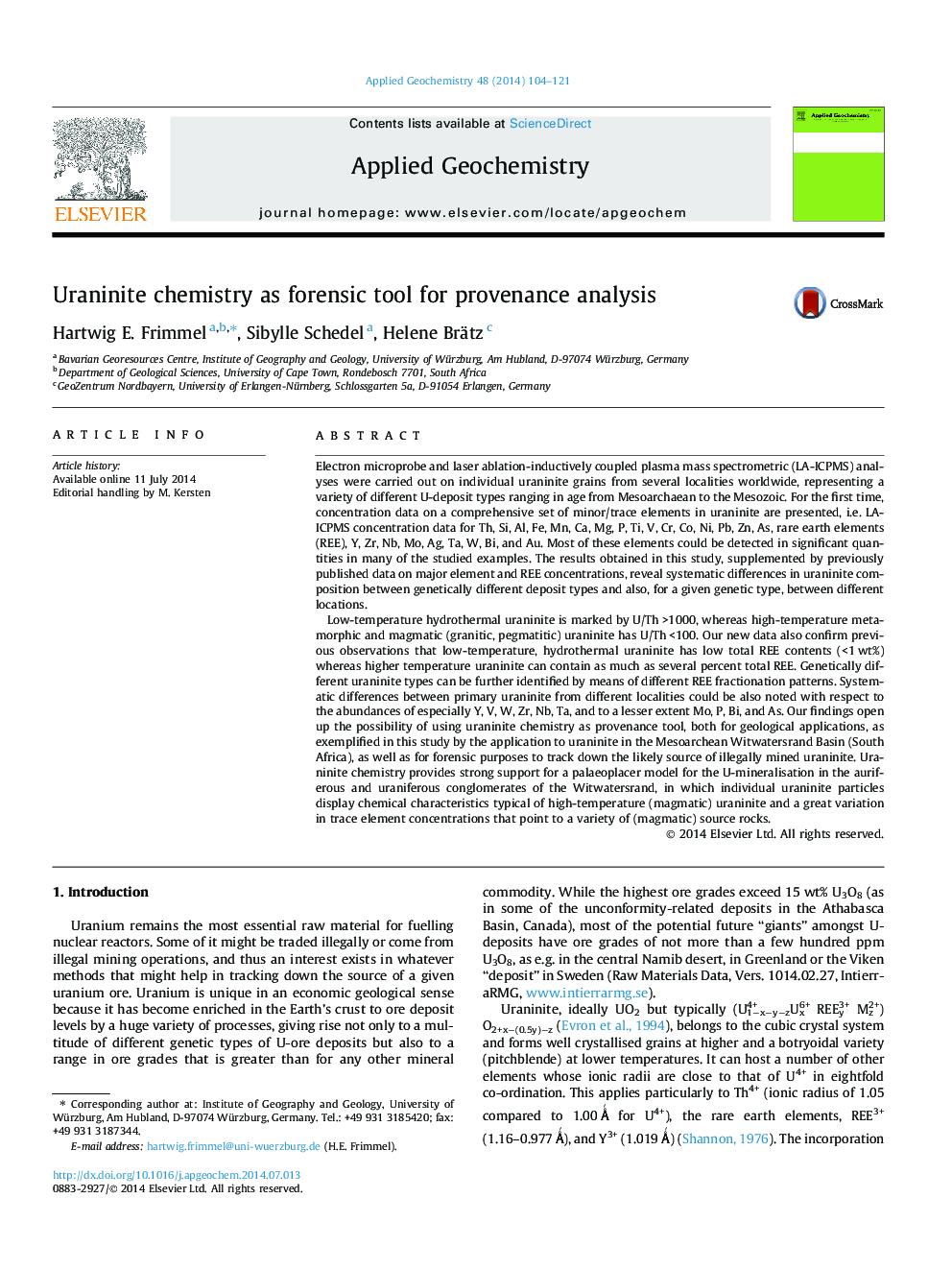| Article ID | Journal | Published Year | Pages | File Type |
|---|---|---|---|---|
| 4435790 | Applied Geochemistry | 2014 | 18 Pages |
•Uraninite chemistry can be used as fingerprint and provenance tool.•U/Th ratio and total REE contents are good indicators of crystallisation temperature.•REE fractionation is strongly dependent on uraninite genesis.•Application to uraninite from the Witwatesrand Basin highlights its detrital nature.•Witwatersrand uraninite is derived from a variety of magmatic sources.
Electron microprobe and laser ablation-inductively coupled plasma mass spectrometric (LA-ICPMS) analyses were carried out on individual uraninite grains from several localities worldwide, representing a variety of different U-deposit types ranging in age from Mesoarchaean to the Mesozoic. For the first time, concentration data on a comprehensive set of minor/trace elements in uraninite are presented, i.e. LA-ICPMS concentration data for Th, Si, Al, Fe, Mn, Ca, Mg, P, Ti, V, Cr, Co, Ni, Pb, Zn, As, rare earth elements (REE), Y, Zr, Nb, Mo, Ag, Ta, W, Bi, and Au. Most of these elements could be detected in significant quantities in many of the studied examples. The results obtained in this study, supplemented by previously published data on major element and REE concentrations, reveal systematic differences in uraninite composition between genetically different deposit types and also, for a given genetic type, between different locations.Low-temperature hydrothermal uraninite is marked by U/Th >1000, whereas high-temperature metamorphic and magmatic (granitic, pegmatitic) uraninite has U/Th <100. Our new data also confirm previous observations that low-temperature, hydrothermal uraninite has low total REE contents (<1 wt%) whereas higher temperature uraninite can contain as much as several percent total REE. Genetically different uraninite types can be further identified by means of different REE fractionation patterns. Systematic differences between primary uraninite from different localities could be also noted with respect to the abundances of especially Y, V, W, Zr, Nb, Ta, and to a lesser extent Mo, P, Bi, and As. Our findings open up the possibility of using uraninite chemistry as provenance tool, both for geological applications, as exemplified in this study by the application to uraninite in the Mesoarchean Witwatersrand Basin (South Africa), as well as for forensic purposes to track down the likely source of illegally mined uraninite. Uraninite chemistry provides strong support for a palaeoplacer model for the U-mineralisation in the auriferous and uraniferous conglomerates of the Witwatersrand, in which individual uraninite particles display chemical characteristics typical of high-temperature (magmatic) uraninite and a great variation in trace element concentrations that point to a variety of (magmatic) source rocks.
